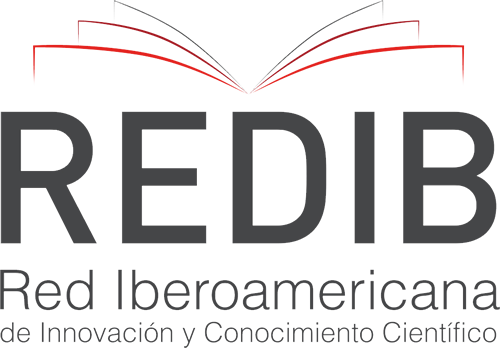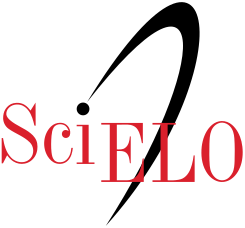Sobre el concepto de alfabetización transmedia en el ámbito educativo. Una revisión de la literatura
DOI:
https://doi.org/10.32870/cys.v0i33.7029Palabras clave:
Revisión sistemática de la literatura, transmedia, alfabetización transmediaResumen
En torno al movimiento mediático de la cultura participativa hay ya muchos enfoques educativos que empiezan a hablar de una alfabetización transmedia. Con una revisión sistemática de la literatura, concluimos que este concepto no se ha definido aún en el ámbito educativo, aunque existe consenso sobre algunos de sus componentes principales: transmedialidad, colaboración, prosumo y espíritu crítico.Descargas
Citas
Alper, M. (2013a). Developmentally appropriate New Media Literacies: Supporting cultural competencies and social skills in early childhood education. Journal of Early Childhood Literacy, 13(2). https://doi.org/10.1177/1468798411430101
Alper, M. (2013b). Transmedia Play: Literacy Across Media. Journal of Media Literacy Education, 52(2), 366–369. Retrieved from www.jmle.org
Alvarez, C., Salavati, S., Nussbaum, M., & Milrad, M. (2013). Collboard: Fostering new media literacies in the classroom through collaborative problem solving supported by digital pens and interactive whiteboards. Computers and Education, 63, 368–379. https://doi.org/10.1016/j.compedu.2012.12.019
Álvarez Monzonillo, J. M., & de Haro, G. (2017). Millennials. La generación emprendedora. Barcelona: Ariel/Fundación Telefónica.
Anderson, T. D. (2014). Making the 4Ps as important as 4Rs. Knowledge Quest, 42(5), 42–47.
Barber, J. F. (2016). Digital storytelling: New opportunities for humanities scholarship and pedagogy. Cogent Arts and Humanities, 3(1), 1–14. https://doi.org/10.1080/23311983.2016.1181037
Bullen, M., Morgan, T., Sangrà, A., Guitert, M., Romero, M., Gisbert, M., … Qayyum, A. (2017). Digital Learners in Higher Education. Retrieved from https://digitallearners.wordpress.com/
Checa-Romero, M. (2016). Developing Skills in Digital Contexts. Games and Culture, 11(5), 463–488. https://doi.org/10.1177/1555412015569248
Checa-Romero, M. (2016). Developing skills in digital contexts: Video games and films as learning tools at primary school. Games and Culture, 11(5). https://doi.org/10.1177/1555412015569248
Conner-Zachocki, J. (2015). Using the digital transmedia magazine project to support students with 21st-century literacies. Theory Into Practice, 54(2), 86–93. https://doi.org/10.1080/00405841.2015.1010835
Conner-Zachocki, J. (2015). Using the Digital Transmedia Magazine Project to Support Students With 21st-Century Literacies. Theory into Practice, 54(2). https://doi.org/10.1080/00405841.2015.1010835
Crompton, H., Burke, D., & Gregory, K. H. (2017). The use of mobile learning in PK-12 education: A systematic review. Computers & Education, 110, 51–63. https://doi.org/10.1016/j.compedu.2017.03.013
Del Mar Grandío-Pérez, M. (2016). El transmedia en la enseñanza universitaria. Análisis de las asignaturas de educación mediática en España (2012-2013). Palabra Clave, 19(1), 85–104. https://doi.org/10.5294/pacla.2016.19.1.4
Establés-Heras, M.-J. (2016). Entre fans anda el juego. Audiencias creativas, series de televisión y narrativas transmedia. Opción: Revista de Ciencias Humanas Y Sociales, 32(11), 476–497. Retrieved from https://dialnet.unirioja.es/servlet/articulo?codigo=5866919
Fleming, L. (2013). Expanding Learning Opportunities with Transmedia Practices: Inanimate Alice as an Exemplar. Journal of Media Literacy Education, 52(2), 370–377. Retrieved from www.jmle.org
Fraiberg, S. (2017). Pretty bullets: Tracing transmedia/translingual literacies of an israeli soldier across regimes of practice. College Composition and Communication, 69(1), 2017.
Gallardo Echenique, E. E. (2012). Hablemos de estudiantes digitales y no de nativos digitales. UT. Revista de Ciències de l’Educació, 7–22.
Gambarato, R. R., & Dabagian, L. (2016). Transmedia dynamics in education: the case of Robot Heart Stories. Educational Media International, 53(4), 229–243. https://doi.org/10.1080/09523987.2016.1254874
Gee, J. P. (2009). New Digital Media and Learning as an Emergin Area and “Worked Examples” as One Way Forward. Massachusetts (US): The MIT Press.
Gee, J. P. (2017). Teaching, Learning, Literacy in Our High-Risk High-Tech World. A Framework for Becoming Human. New York: Teachers College Press.
Gordon, I., & Lim, S. S. (2016). Introduction to the special issue “Cultural industries and transmedia in a time of convergence: Modes of engagement and participation.” Information Society, 32(5), 301–305. https://doi.org/10.1080/01972243.2016.1212614
Grandío-Pérez, M. del M. (2016). El transmedia en la enseñanza universitaria. Análisis de las asignaturas de educación mediática en España (2012-2013). Palabra Clave. Revista de Comunicación, 19(1), 85–104. https://doi.org/10.5294/pacla.2016.19.1.4
Guerrero-Pico, M. (2015). Producción y lectura de fan fiction en la comunidad online de la serie Fringe: transmedialidad, competencia y alfabetización mediática. Palabra Clave. Revista de Comunicación, 18(3), 722–745. https://doi.org/10.5294/pacla.2015.18.3.5
Gürsimsek, Ö. A. (2016). Animated GIFs as vernacular graphic design: producing Tumblr blogs. Visual Communication, 15(3), 329–349. https://doi.org/10.1177/1470357216645481
Ito, M., Gutiérrez, K., Livingstone, S., Penuel, B., Rhodes, J., Salen, K., … Watkins, C. S. (2013). Connected Learning: an agenda for research and design. Irvine (CA, US). Retrieved from http://eprints.lse.ac.uk/48114/
Jenkins, H. (1991). Textual Poachers: Television Fans and Participatory Culture. New York (US): Routledge.
Jenkins, H. (2004). The Cultural Logic of Media Convergence. International Journal of Cultural Studies, 7(1), 33–43. https://doi.org/10.1177/1367877904040603
Jenkins, H. (2006). Convergence Culture. Where Old and New Media Collide. New York (US): Nwe York University Press.
Jenkins, H. (2008). Convergence culture. La cultura de la convergencia de los medios de comunicación. Barcelona: Paidós.
Jenkins, H., Ito, M., & Boyd, D. (2016). Participatory Culture in a Networked Era: a Conversation on Youth, Learning, Commerce, and Politics. Journal of Identity and Migration Studies, 10(2), 214. https://doi.org/10.1017/CBO9781107415324.004
Jenkins, H., Purushotma, R., Weigel, M., Clinton, K., & Robison, A. J. (2009). Confronting the Challenges if Participatory Culture. Cambridge (Massachusetts, US): The MIT Press.
Jover, G., González Martín, M. D. R., & Fuentes, J. L. (2015). Exploring new ways of media construction of citizenship in schools: From Antigone to transmedia storytelling | Exploración de nuevas vías de construcción mediática de la ciudadanía en la escuela: De antígona a la narrativa transmedia. Teoria de La Educacion, 27(1). https://doi.org/10.14201/teoredu20152716984
Kline, D. T. (2010). Metamedievalism, Videogaming, and Teaching Medieval Literature in the Digital Age. Teaching Literature at a Distance.
Lacasa, P. (2010). Children transmedia and virtual experiences inside and outside the classrooms. In L. Wong (Ed.), Proceedings of the 18th International Conference on Computers in Education: Enhancing and Sustaining New Knowledge Through the Use of Digital Technology in Education, ICCE 2010. Malaysia: Asia-Pacific Society for Computers in Education.
Lenhart, A., Madden, M., & Hitlin, P. (2005). Teens and technology: Youth are leading the transition to a fully wired and mobile nation. Pew Internet and American Life Project (Vol. 86). Washington, D.C. (US).
Llorente, C., Pasnik, S., Moorthy, S., Hupert, N., Rosenfeld, D., & Gerard, S. (2013). Preschool Teachers Can Use a PBS KIDS Transmedia Curriculum Supplement to Support Young Children’s Mathematics Learning: Results of a Randomized Controlled Trial. A Report to the CPB-PBS Ready to Learn Initiative. In SREE (Ed.), Society for Research on Educational Effectiveness Spring 2015 Conference. Evanston (Illinois, US): SREE.
López Yepes, A. (2016). Biblioteca universitària i entorns audiovisuals en obert: estat de la qüestió i proposta d’actuacions. BiD: Textos Universitaris de Biblioteconomia I Documentació, 36(36). https://doi.org/https://dx.doi.org/10.1344/BiD2016.36.17#sthash.4WnyEfMp.dpuf
Lugo Rodríguez, N. (2016). Diseño de narrativas transmedia para la transalfabetización. Universitat Pompeu Fabra. Retrieved from http://www.tdx.cat/handle/10803/396131
McDougall, J., & Potter, J. (2015). Curating media learning: Towards a porous expertise. E-Learning and Digital Media, 12(2), 199–211. https://doi.org/10.1177/2042753015581975
Miočić, B., & Perinić, J. (2014). New media literacy skills of youth in Zadar. Medijska Istrazivanja, 20(2), 231–254.
Moon, M. R. (2016). Thought We Wouldn’t Notice, but We Did’: An Analysis of Critical Transmedia Literacy Among Consumers of the Marvel Cinematic Universe. Texas A&M University-Corpus Christi. Retrieved from https://tamucc-ir.tdl.org/tamucc-ir/handle/1969.6/678
Munaro, A. C., Dudeque, A. M., & Vieira, P. (2016). Use of Transmedia Storytelling for Teaching Teenagers. Creative Education, 7, 1007–1017. https://doi.org/10.4236/ce.2016.77105
Okoli, C., & Schabram, K. (2010). A Guide to Conducting a Systematic Literature Review of Information Systems Research. Working Papers on Information Systems, 10(26), 1–51. https://doi.org/10.2139/ssrn.1954824
Pence, H. E. (2012). Teaching with Transmedia. Journal of Educational Technology Systems, 40(2), 131–140.
Pietschmann, D., Völkel, S., & Ohler, P. (2014). Transmedia Critical| Limitations of Transmedia Storytelling for Children: A Cognitive Developmental Analysis. International Journal of Communication, 8(0), 22.
Potter, J., & Gilje, O. (2015). Curation as a new literacy practice. Journal of E-Learning and Digital Media, 12(2), 123–127.
Ramasubramanian, S. (2016). Racial/ethnic identity, community-oriented media initiatives, and transmedia storytelling. Information Society, 32(5), 333–342. https://doi.org/10.1080/01972243.2016.1212618
Raybourn, E. M. (2012). Beyond serious games: Transmedia for more effective training & education. In International Defense and Homeland Security Simulation Workshop, DHSS 2012, Held at the International Multidisciplinary Modeling and Simulation Multiconference, I3M 2012.
Rhoades, M. (2016). “Little Pig, Little Pig, Yet Me Come In!” Animating The Three Little Pigs with Preschoolers. Early Childhood Education Journal, 44(6), 595–603. https://doi.org/10.1007/s10643-015-0743-0
Richardson, W. (2013). Students First , Not Stuff. Technology-Rich Learning, 70(6), 10–14.
Robinson, L. (2015). Multisensory, Pervasive, Immersive: Towards a New Generation of Documents. Journal of the Association for Information Science and Technology, 66(8), 1734–1737. https://doi.org/10.1002/asi
Roccanti, R., & Garland, K. (2015). 21st Century Narratives: Using Transmedia Storytelling in the Language Arts Classroom. Signal Journal, 38(1), 16–20.
Rodrigues, P., & Bidarra, J. (2014). Transmedia storytelling and the creation of a converging space of educational practices. International Journal of Emerging Technologies in Learning, 9(6), 42–48. https://doi.org/10.3991/ijet.v9i6.4134
Rodrígues, P., & Bidarra, J. (2014). Transmedia storytelling and the creation of a converging space of educational practices. International Journal of Emerging Technologies in Learning, 9(6). https://doi.org/10.3991/ijet.v9i6.4134
Scolari, C. A. (2015). La hora del prosumidor. El Cactus, 4(4), 24–26.
Scolari, C. A. (2016). Estrategias de aprendizaje informal y competencias mediáticas en la nueva ecología de la comunicación. Revista TELOS (Cuadernos de Comunicación E Innovación), 1–9. Retrieved from https://repositori.upf.edu/handle/10230/27788
Soep, E. (2012). The digital afterlife of youth-made media: Implications for media literacy education. Comunicar, 19(38). https://doi.org/10.3916/C38-2012-02-10
Soriano, C. R. R. (2016). Transmedia mobilization: Agency and literacy in minority productions in the age of spreadable media. Information Society, 32(5), 354–363. https://doi.org/10.1080/01972243.2016.1212620
Weaver, T. (2015). Blurred Lines and Transmedia Storytelling: Developing Readers and Writers Through Exploring Shared Storyworlds. Signal Journal, 38(1), 23–26.
Weedon, A., & Knight, J. (2015). Media literacy and transmedia storytelling. Convergence: The International Journal of Research into New Media Technologies, 21(4), 405–407. https://doi.org/10.1177/1354856515601656
Wiklund-Engblom, A., Hiltunen, K., Hartvik, J., & Porko-Hudd, M. (2013). Transmedia storybuilding in Sloyd. In Proceedings of the IADIS International Conference Mobile Learning 2013, ML 2013.
Wiklund-Engblom, A., Hiltunen, K., Hartvik, J., Porko-Hudd, M., & Johansson, M. (2014). “Talking Tools”: Sloyd Processes Become Multimodal Stories with Smartphone Documentation. International Journal of Mobile and Blended Learning, 6(2), 41–57. https://doi.org/10.4018/ijmbl.2014040104
Witte, S., Rybakova, K., & Kollar, C. (2015). Framing Transmedia: Pre-service Teachers’ Transmedia Interactions with Young Adult Literature Narratives. Signal Journal, 38(1), 27–33.
Wohlwend, K. E. (2012). The boys who would be princesses: playing with gender identity intertexts in Disney Princess transmedia. Gender and Education, 24(6), 593–610. https://doi.org/10.1080/09540253.2012.674495

Descargas
Publicado
Cómo citar
Número
Sección
Licencia
Los autores/as que publiquen en esta revista aceptan las siguientes condiciones:
De acuerdo con la legislación de derechos de autor, los autores conservan los derechos de autoría y otorgan a Comunicación y Sociedad el derecho de primera comunicación pública de la obra. Comunicación y Sociedad no realiza cargos a los autores por enviar y procesar artículos para su publicación.
Los autores/as pueden realizar otros acuerdos contractuales independientes y adicionales para la distribución no exclusiva de la versión del artículo publicado en Comunicación y Sociedad (por ejemplo incluirlo en un repositorio institucional o publicarlo en un libro) siempre que indiquen claramente que el trabajo se publicó por primera vez en Comunicación y Sociedad.










